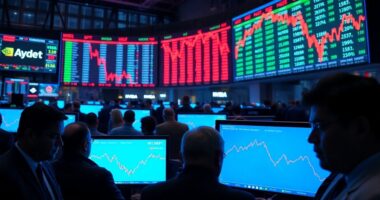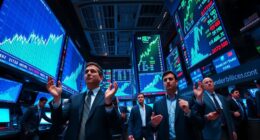You might think a wild bear's story is just another tale from the animal kingdom, but its legacy runs deep in the world of finance. Picture traders in early 1700s London, boldly selling bearskins they didn't yet possess. This practice birthed the term "bear," a symbol of market risk and investor sentiment. But how did this fierce creature come to embody such a daunting label? The answer reveals much about our ongoing relationship with market cycles.

While wandering through the dense forests of the Rockies, you might catch a glimpse of a wild bear, a creature that embodies both the beauty and unpredictability of nature. Interestingly, this majestic animal also lends its name to one of the scariest labels in financial markets—"bear." The origins of this term trace back to the early 1700s in London, long before the U.S. stock market even existed. It's believed that the term relates to the practice of selling bearskins before actually acquiring them, a form of speculative trading that reflects the risks investors take today.
In the world of finance, a bear market signals a decline in stock prices, often accompanied by economic downturns that can shake entire nations. For instance, the Great Depression that followed the 1929 stock market crash is a stark reminder of how devastating such markets can be. The terms "bull" and "bear" have spread globally, capturing the essence of market trends, with bulls representing optimism and bears embodying pessimism. In your financial journey, understanding these labels helps you predict future market movements based on current trends. Since 1942, there have been 16 bull markets and 15 bear markets, showcasing the cyclical nature of market performance.
The etymology of "bear" is fascinating, with several theories suggesting why it became associated with declining markets. One idea posits that bears swipe downward when they attack, which aligns with the downward trend of a bear market. Another theory connects the term to the phrase "selling the bear's skin before one has caught the bear," symbolizing the speculative nature of selling before actually possessing an asset. This connection may also link back to historical blood sports that featured bears and bulls, further embedding these terms in our cultural psyche.
Over time, "bull" and "bear" have become synonymous with market volatility and investor sentiment. Literary works have often referenced these terms, especially concerning financial crises and speculative practices. The South Sea Company's financial bubble and its eventual crash serve as an early example of how these terms emerged in the context of market behavior. Their usage spans various financial markets worldwide, illustrating their universal relevance in understanding economic conditions.
As you navigate the intricacies of investing, remember that these animalistic symbols evoke strong emotions tied to financial risk and opportunity. The story of the wild bear, intertwined with market dynamics, continues to shape how you perceive and respond to the waves of the financial world.









